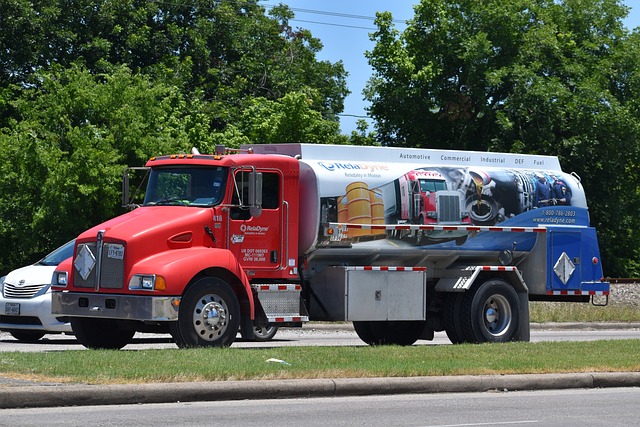UK ‘Concrete Jungles’ Have Worse Pollution Than Green Areas
The United Kingdom’s bustling urban landscapes, often dubbed ‘concrete jungles,’ have become epicenters of a less visible but more insidious form of overgrowth: pollution. Despite the progress made in various environmental areas, recent studies have highlighted a stark disparity in air quality between these densely built-up areas and the country’s greener neighborhoods. This difference worsens environmental concerns and raises serious health and social equity issues.
The Hidden Cost of Urbanization
Urbanization has brought about remarkable advancements and conveniences but at a significant environmental cost. The transformation of green spaces into crowded streets and towering buildings has reduced our contact with nature and intensified the pollutants we breathe daily.
One of the most persistent sources of urban pollution comes from diesel vehicles. Diesel vehicles once promoted as an eco-friendlier alternative, have now become notorious for their noxious emissions. The combustion process of diesel releases a mixture of airborne particles and gases, contributing to the toxic cocktail of urban air. Diesel emissions have nitrogen oxides and particulate matter, both of which are linked to respiratory diseases, cardiovascular issues, and increased mortality rates.
Their prevalence in city centers, where traffic congestion is commonplace, intensifies airborne pollutants exponentially. The infamous Dieselgate scandal laid bare the stark realities of diesel emissions, where certain automobile manufacturers manipulated testing to display more favorable emission results than what was actual during typical driving conditions. It resulted in billions of fines for Volkswagen and thousands of diesel emission claims from environmental groups and consumers.
This scandal was not an isolated incident but indicative of a widespread disregard for ethical practices in pursuit of profit – at the expense of public health. The sheer volume of diesel cars that traverse our cities remains to be the root issue. Without decisive action, the urban dweller’s exposure to harmful pollutants will only spiral upwards. It begs the question, is enough being done to mitigate these risks, and how can we turn the tide?
Inhabitants of less affluent areas, often with less greenery and higher traffic flow, bear the brunt of health risks associated with poor air quality. The deficiency of trees in these neighborhoods means fewer natural filters to absorb pollutants, a stark reminder of the inequity in the distribution of environmental benefits.
The disparity in air pollution levels and access to green spaces raises larger questions of climate justice. Many activists and environmental groups argue that the uneven distribution of trees and the consequent exposure to pollution are not mere coincidences but manifestations of environmental injustice that need immediate addressing.
Bridging the Green Divide
Efforts to increase green spaces in urban areas must consider the socio-economic contexts of these neighborhoods. Policymakers could better align their strategies with environmental justice goals by acknowledging and addressing the inherent biases in urban planning.
Trees play a significant role in mitigating pollution – acting as natural air purifiers. They absorb carbon dioxide and other pollutants, release oxygen, and contribute to cooling urban heat islands. The distribution of trees, therefore, is crucial in the fight against pollution.
Initiatives such as the Tree Equity Score aim to map out areas most lacking in tree coverage and most vulnerable to pollution. By creating an easily accessible visual representation of this distribution, they highlight the link between socio-economic status and access to clean air. The insights from such measures can and should inform policy decisions, particularly in allocating resources for urban development and environmental conservation.
The Future of UK’s Cities
The path forward for the UK’s cities must include a commitment to reducing emissions, particularly from diesel cars, and promoting ‘tree equity’. While transitioning from diesel vehicles presents economic and logistical challenges, it’s vital to safeguarding public health. Investing in green infrastructure, such as parks, green roofs, and vertical gardens, can offer a multifaceted solution that absorbs pollutants and enhances urban aesthetics and community well-being.
The conversation around tree equity and pollution is, at its heart, a conversation about climate justice. Ensuring that all communities, regardless of socio-economic status, have equal protection and representation in policymaking is crucial. Active engagement with affected communities will be essential in crafting equitable and effective solutions. Creating awareness about the dangers of diesel pollution and the importance of green spaces is just as important as the policies themselves.
Finally, individual contributions cannot be understated. From choosing eco-friendly transportation to supporting local tree-planting initiatives, the collective action of concerned citizens can spearhead change and drive the nation toward a greener future. For consumers affected by this pollution, seeking compensation through legal avenues has emerged as a viable option. Those who own or have owned diesel cars might be eligible for diesel compensation due to the misrepresentation of emissions by some manufacturers.
Diesel emission claims spotlight the accountability issues and the potential remedies available to consumers seeking justice. If you’ve been affected by diesel pollution, exploring the legal route to compensation can be initiated by contacting diesel compensation claims experts or consumer rights groups. Click here to check your eligibility.

